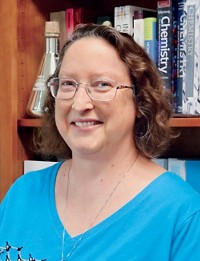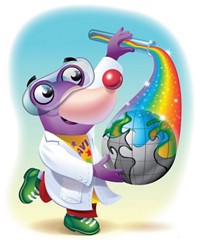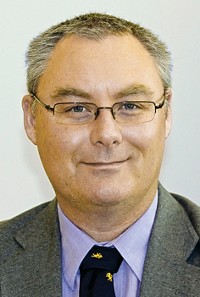Advertisement
Grab your lab coat. Let's get started
Welcome!
Welcome!
Create an account below to get 6 C&EN articles per month, receive newsletters and more - all free.
It seems this is your first time logging in online. Please enter the following information to continue.
As an ACS member you automatically get access to this site. All we need is few more details to create your reading experience.
Not you? Sign in with a different account.
Not you? Sign in with a different account.
ERROR 1
ERROR 1
ERROR 2
ERROR 2
ERROR 2
ERROR 2
ERROR 2
Password and Confirm password must match.
If you have an ACS member number, please enter it here so we can link this account to your membership. (optional)
ERROR 2
ACS values your privacy. By submitting your information, you are gaining access to C&EN and subscribing to our weekly newsletter. We use the information you provide to make your reading experience better, and we will never sell your data to third party members.
Education
Chemistry Colors Our World: Making Chemistry Magic Again
by George L. Heard, Chair, Committee On Community Activities
October 12, 2015
| A version of this story appeared in
Volume 93, Issue 40
At the American Chemical Society national meeting in Boston, I was joined by a number of volunteers from nearby local sections at Boston Children’s Museum to present hands-on chemistry activities to a large group of community members. One of the greatest statements I heard from a volunteer on that day was that he can’t wait to do it again—the experience of joining with kids engaging with chemistry and having fun cannot be matched. Fortunately, National Chemistry Week is just around the corner, and our legion of loyal coordinators and volunteers is ready once again to bring the chemistry of color to life for children and communities across the nation.
The theme of National Chemistry Week this year is “Chemistry Colors Our World,” and it is intended to appeal to all of us. I’m sure many of you would have had your interest in chemistry sparked by a magic show involving color changes or by seeing a particularly brilliant display and wanting to know more about how the colors were produced. Fireworks displays, sunrises and sunsets, rainbows, and even the recent appearance of the blood moon can be explained using fundamental concepts in chemistry.
The color theme provides a great opportunity to embrace the synergy between art and chemistry. At a time when there is tension between the perceived importance of art and science, we can bring the two together and show that there can be no art without chemistry and that chemists can be inspired by the arts. Volunteer to help judge your local section’s illustrated poetry competition to see how they can go hand in hand.
Here is one of my personal favorite outreach activities that is fun and inexpensive and that rewards participants with an attractive bookmark that they can take home. It is adapted from an activity published by the Nanoscale Informal Science Education Network, which ACS partnered with in 2012 when the theme of National Chemistry Week was “Nanotechnology: The Smallest Big Idea in Science.” The use of color makes it an excellent activity for this year’s National Chemistry Week.

You’re going to need a bowl of water—I use an aluminum foil pan—a bottle of clear nail polish, and some black card stock cut into a strip the size of a bookmark. When I have a group of kids doing this activity, I have them write their name or draw a picture on their bookmark to personalize it. Take the nail polish, and place one drop on the surface of the water—you should see it spread out as it forms a thin film on the surface. Looking at it from the side, you may see a rainbow pattern. This film can be lifted up by sliding the bookmark under the surface. As it dries, the film sticks to the card, making a rainbow bookmark.
Engaging a child with chemistry will leave them with lasting memories. Recently, I was a guest at an event celebrating the end of a new after-school program for kids in my city. Some of the attendees were invited to come to the stage and talk about their favorite experience of the program. I believe most in the room were expecting stories of practicing basketball with a Division I college program or designing a personal webpage, so there were a few jealous eyes in my direction when the majority of the kids came up and explained how much they enjoyed the science experiments they did with my student volunteers!
Outreach is not only about the kids—it is important to talk with parents and guardians during an outreach event to keep them informed about the science and to ensure that you are conducting outreach in a safe and fun fashion. Encourage parents to try the same activities you are doing at home. And if you are giving copies of the National Chemistry Week publication, Celebrating Chemistry, to attendees, point out that the experiments can be done at home.
A sincere thank you to all local section coordinators, volunteers who help facilitate the outreach activities, and Chemistry Ambassadors who speak simply about science. I look forward to hearing about your successful outreach efforts for National Chemistry Week and beyond!
Views expressed on this page are those of the author and not necessarily those of ACS.






Join the conversation
Contact the reporter
Submit a Letter to the Editor for publication
Engage with us on Twitter